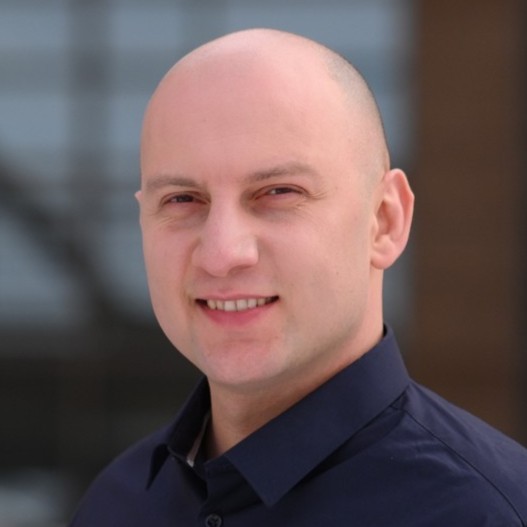Artificial Intelligence
From PhD Student to Machine Learning Entrepreneur: SuperAnnotate CEO Tigran Petrosyan (Part 1)

Tigran and his brother were Ph.D. students when they decided to quit their Ph.D. program and build a company out of their Ph.D. research technology.
They have since raised over $15M in funding and built a customer base of ~200 in their ML Ops business. They are leveraging countries like Armenia and Bangladesh for development and data services.
>>>Best of Bootstrapping: Bootstrapping with Services at the Cusp of AI and FinTech

If you haven’t already, please study our Bootstrapping Course and Investor Introductions page.
In this case study, Cognaize Founder Vahe Andonians talks a lot about bootstrapping – bootstrapping to exit, bootstrapping with services, so on. You will also learn a nifty way of building domain knowledge on top of horizontal AI expertise. This is a valuable and extremely interesting way of building AI companies for entrepreneurs to consider.
Sramana Mitra: Let’s start at the very beginning of your journey. Where were you born, raised? What kind of background?
Vahe Andonians: I was born in Iran. When I was a couple of weeks old, we moved to the United States. Then my parents moved to Austria. I grew up in Austria. I studied there. I studied high-frequency technology. I did my first job there. From there, we went to Germany. I’ve lived in Germany now for 12 years.
Bootstrapping with Services at the Cusp of AI and FinTech: Vahe Andonians, Founder of Cognaize (Part 1)

In this case study, you will hear Vahe talk a lot about bootstrapping – bootstrapping to exit, bootstrapping with services, so on. You will also learn a nifty way of building domain knowledge on top of horizontal AI expertise. This is a valuable and extremely interesting way of building AI companies for entrepreneurs to consider.
>>>Entrepreneurship in the Age of Artificial Intelligence and Machine Learning

There are over six million students enrolled in Machine Learning courses on Udemy. The most daring will try to start their own businesses.
For these learners, we continue to introduce Udemy courses based on the 1Mby1M methodology that will assist budding entrepreneurs in creating a pragmatic strategy.
I believe, strongly, that entrepreneurship and entrepreneurial capitalism can be democratized, and wealth can be created in the middle of the pyramid using capitalistic principles. In the next 2-3 decades, the potential for distributed capitalism is very high and the outcome should be extremely positive around the world. That is the mission upon which my current work with One Million by One Million is based.
Artificial Intelligence, Big Data and Machine Learning are going to be at the forefront of this immense burst of energy.
Thought Leaders in Artificial Intelligence: Comet ML CEO Gideon Mendels (Part 5)
Sramana Mitra: Of the millions of people who are pursuing a machine learning career as a citizen data scientist track, data scientist track, or a developer track, in what time frame will that impact industry?
Gideon Mendels: It’s a gradual change. It’s already impacting the industry. When I studied computer science, there weren’t any machine learning courses in the curriculum. You can take one as optional. Today it’s core. Even if they start in a software engineering role, having that knowledge is significant. The impact started five to seven years ago.
>>>Best of Bootstrapping: Bootstrapped a World-Class AI Startup First, Raised Money Later

If you haven’t already, please study our Bootstrapping Course and Investor Introductions page.
Raghu Ravinutala, CEO of Yellow.ai, has built an incredible AI startup from India with a global base of enterprise clients. Fabulous story!
Sramana Mitra: Let’s start by introducing our audience to yourself as well as the genesis of Yellow.ai.
Raghu Ravinutala: I’m the Co-Founder and CEO of Yellow.ai. Yellow.ai enables enterprises to drive automation on their customer experiences and employee experience by integrating a whole set of enterprise data and delivering phenomenal experiences that the companies can leverage for sales, marketing, HR, and IT automation.
Thought Leaders in Artificial Intelligence: Comet ML CEO Gideon Mendels (Part 4)
Sramana Mitra: There seems to be a very large number of developers who are learning Python and are either practicing or aspiring machine learning engineers. The number is in the millions. What are these people doing?
Gideon Mendels: As in how are they learning?
Sramana Mitra: What is the application? What is the career path? Is the industry active enough to absorb five million ML developers?
>>>Thought Leaders in Artificial Intelligence: Comet ML CEO Gideon Mendels (Part 3)
Gideon Mendels: If you think about the managers, they’re mostly looking for this visibility. If I use the software engineering analogy, as engineering managers we are able to look at everyone’s pull request, commit history. We have full visibility on who’s working at what. A lot of these managers rely on self-reported progress.
With Comet, we provide them with this full visibility. As a manager, you can see every result of every experiment by every team member. The main goal there is that those managers can support their team members and guide them in understanding what’s working and what’s not working.
>>>